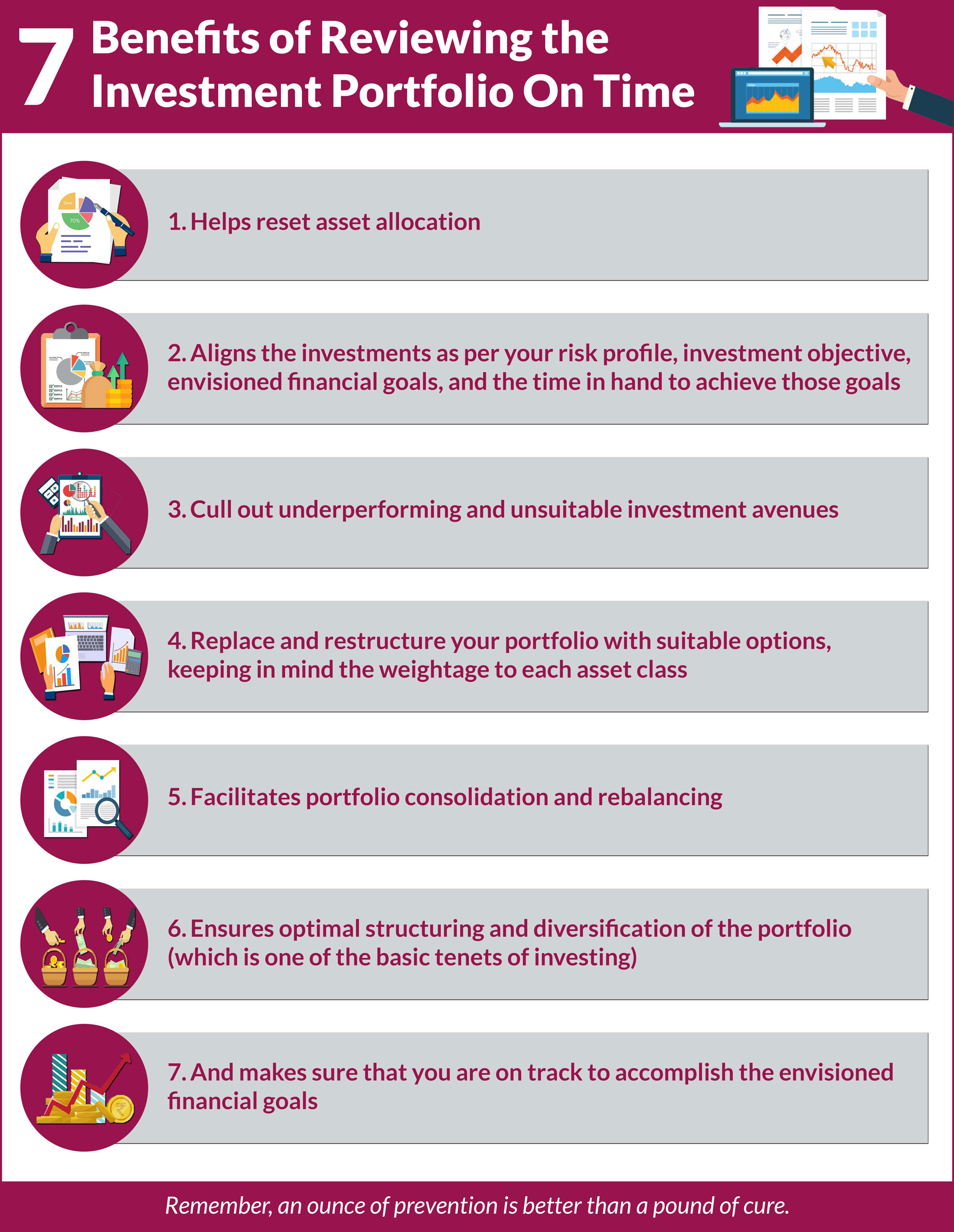7 MinsAug 18, 2022
If you invested in Indian equities just before the COVID-19 pandemic, by now you may have made some spectacular returns. However, in the last few months, with events such as the Russia-Ukraine war, supply-chain disruptions, inflation spiralling
worldwide, major central banks raising policy rates to control inflation, the outbreak of the new monkeypox virus and the possibility of recession surfacing; the equity markets have hit turbulence. Three factors stand out:
(1) Equities
have fallen
(2) Bond yields have improved
(3) Gold is proving to be a portfolio diversifier

As an investor you need to tread cautiously; don’t get swayed by irrational exuberance. Volatility is likely to intensify going forward. Companies' earnings would be under pressure as inflation plays as a spoilsport and growth slows.
Besides, halfway through the calendar year 2022, it would be wise to review and rebalance your investment portfolio. This will enable your portfolio to weather out the volatility by critically reviewing your asset allocation and investment
avenues therein.
Your risk profile may have changed, the financial circumstances are different, the investment objective or return expectation may have altered, the financial goals are different, and the time to achieve the goal may have
reduced.
Taking all this into consideration, performing a holistic portfolio review exercise would prove to be in the interests of your long-term well-being rather than taking investment decisions in an ad hoc manner, being biased, and/or
attempting to time the markets (which could prove detrimental to your wealth and health).

Review your equity portfolio:
When you review the equity portion of your portfolio, assess the following:
- The total number of stocks and equity-oriented mutual funds
- The fundamental attributes of stocks and/or equity-oriented mutual funds
- The price-to-equity ratio (P/E ratio), the earnings trend (quarter-on-quarter, year-on-year), the Earnings Per Share (EPS), Return on Capital Employed (ROCE), Return on Assets (ROA), the dividend pay-out history, dividend yield, among many
quantitative aspects
- The company-wise exposure
- Exposure to market capitalization segments – large-cap, mid-cap, and small-cap
- Sector-wise exposure
- In the case of equity-oriented mutual funds – AMC-wise allocation, sub-category wise exposure to various equity-oriented funds (large-cap funds, mid-cap funds, large & mid-cap funds, small-cap funds, multi-cap funds, dividend yield
funds, value-oriented style funds, focused funds, etc.), the underlying portfolio characteristics of the schemes, their investment styles, etc.
Don’t make the mistake of expecting a super-normal return from stocks and equity mutual fund in the short-term, or laying much emphasis on past returns, chasing every IPO and NFO
that hits the market, being influenced by unsolicited and unqualified investment advice, or copying someone else’s investment portfolio. Make sure your allocation to equities is as per what is best suited for you.
[Also Read:How Fixed Deposits help during market volatility]
Review your debt portfolio:
Along with equities, allocate a sensible portion to debt and fixed-income investment instruments. With interest rates moving up (given the fact that policy rates have increased and will continue
to increase for some more time until inflation falls within the comfort range), it makes sense to invest in Fixed Deposits (FDs) now that the FD rates are competitive. Doing so may help add some stability to your investment portfolio and earn you fixed, secured, and steady returns.
As far as possible, choose the cumulative plan whereby you can compound your hard-earned money. You may
follow the laddering strategy to invest in multiple FDs whereby your money is spread across maturity periods attracting different interest rates, and it potentially yields you higher returns. To know how much returns your investments in a
bank FD will earn, use Axis Bank’s FD calculator.
In your debt or fixed-income portfolio evaluate the following:
- The total number of debt securities: corporate fixed deposits; debentures; bonds; types of debt mutual funds; bank fixed deposits, etc.
- The fundamental attributes of the debt securities (who is the issuer; yield; the rate of interest; the investment plans/options; the tenure/Maturity/Lock-in Period; premature withdrawals, etc.)
- The issuer-wise exposure
- Exposure in terms of credit rating, In the case of debt mutual funds -- AMC-wise allocation, sub-category wise exposure to various debt-oriented funds (corporate bond funds, credit risk funds, dynamic bond funds, duration funds, gilt funds,
liquid funds, overnight funds, etc.), the underlying portfolio characteristics of the schemes held (whether the securities are issued by private entities, Public Sector Undertakings, Central Government, State Government, the maturity profile,
and credit ratings conferred)
Apart from equity and fixed-income instruments, tactically allocate some portion (10% to 15% of your entire investment portfolio) towards gold and hold it with a long-term view (of over 5 to 10 years) by assuming moderately high risk. In times
of economic uncertainty, inflation, and heightened volatility in the equity markets; gold is likely to display its traits of being a safe haven, a hedge, and a store of value. In other words, it may prove to be an effective portfolio diversifier.
But make sure to buy gold the smart way ––in the form of Gold ETFs, Gold Savings Funds, and/or Sovereign Gold Bonds––as
opposed to buying bars, coins, and jewellery that add to your worry about its safety and holding cost.
Also, hold an ‘optimal’ cash level in the portfolio (in a Savings Bank Account and/or an Overnight Fund) to cushion the volatility. This serves two purposes: 1) for defensive consideration (when you believe the markets are over-valued and/or you have overbought); and 2) to pursue new investment opportunities that come
your way.
In the entire portfolio review exercise, if you are convinced that you own a fitting portfolio that has the potential to earn respectable returns and accomplish the envisioned financial goals, you should be happy. Don’t just follow
a buy-and-forget approach.
Disclaimer: This article is for information purpose only. The views expressed in this article are personal and do not necessarily constitute the views of Axis Bank Ltd. and its employees. Axis Bank Ltd. and/or the author shall not be responsible for any direct / indirect loss or liability incurred by the reader for taking any financial decisions based on the contents and information. Please consult your financial advisor before making any financial decision
Mutual Fund investments are subject to market risk, read all scheme related documents carefully. Axis Bank Ltd is acting as an AMFI registered MF Distributor (ARN code: ARN-0019). Purchase of Mutual Funds by Axis Bank’s customer is purely voluntary and not linked to availment of any other facility from the Bank. *T&C apply

















